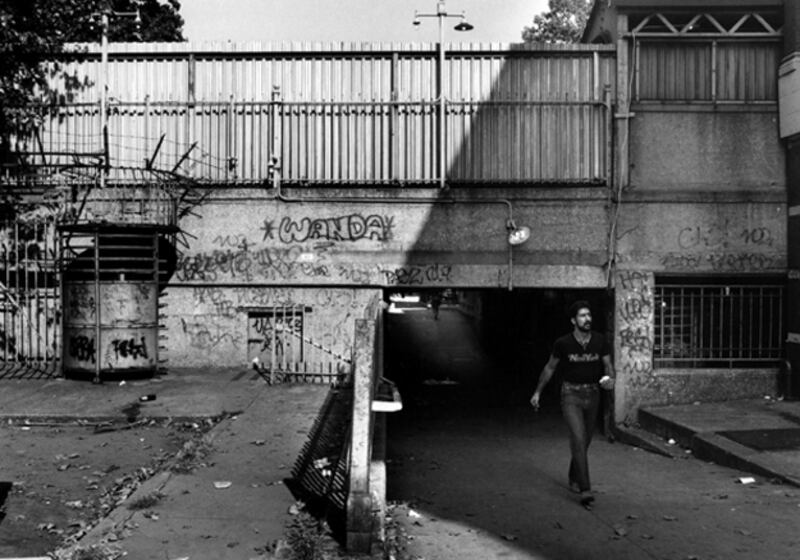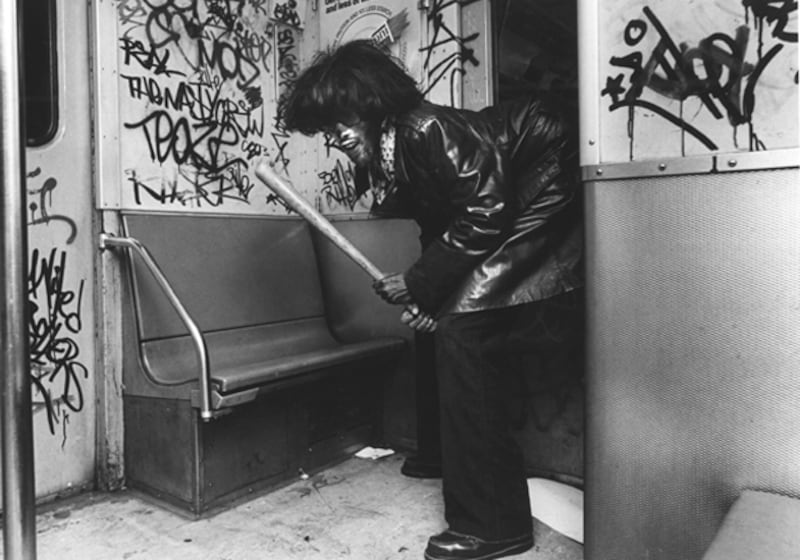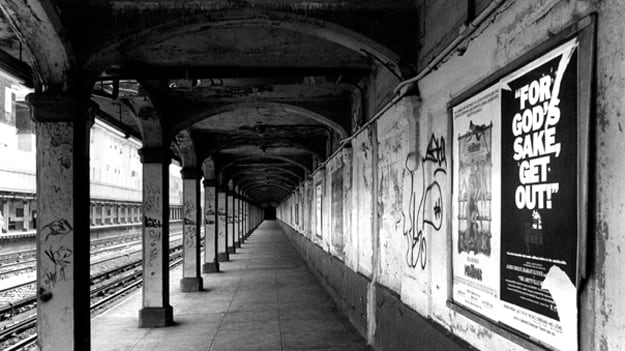
John F. Conn has photographed everything from the ravages of racism in apartheid-era South Africa to his ex-wife's second wedding, but one of his most haunting collections is from when he shot the New York City subway system in the early 1980s.
“It smelled a lot,” he recalls. “14th Street, Union Square, was basically a urine stop. The air conditioning never worked. People rode between cars because it was the only way to stay cool. And there was a way higher crime rate in the subway back then than on the streets. Everyone knew it. You avoided falling asleep at all costs.”
John Conn
Tonight, the remake of The Taking of Pelham One Two Three opens nationwide—a sleek summer blockbuster of an action film about a high-tech hijacking of a New York City subway train. But while the 1974 original may have been set on the same line as the remake (the No. 6 local), it was an entirely different subway. The original's gritty narrative took place in a subterranean system so plagued with violent crime, filth, and terrifying derailments that simply commuting to work could feel like taking your life in your hands.
New York's subway became a national symbol of urban decay and a civic symbol of the city's decline. Subway stations overflowed with garbage and were home to criminals and vagrants. A vigilante police force called the Guardian Angels walked the Pelham line, then known then as the “Mugger's Express.” John Conn

Conn rode these rails in the early ‘80s sporting a pricey Hasselblad camera with a 2¼ lens. He photographed the subway, including the real Pelham line, and its constituency in all their glorious degradation. His compelling photography remains to this day as thorough and extensive a visual documentation as exists of that moment in the history of New York mass transit.
Conn himself suffered three mugging attempts while photographing, but is quick to point out that, owing to his Jujitsu and Marine training, the attempts were just that: attempts. One of the more memorable incidents happened downtown at 3 a.m. An otherwise innocuous looking subway musician, whom Conn had asked permission to photograph, pounced on him as soon as he was changing lenses, demanding to know where John kept his money. “I thought, shit, the guy is good,” Conn recalls. “He waited until my hands were full of expensive equipment to make his move.” What the mugger hadn't counted on was John's resourcefulness.

The camera lens, which was in one hand, cost about $1,700; the camera body, in the other, cost a mere $500. So John hit him with the camera body and the assailant went down. “Hasselblad makes a sturdy camera,” says John, “but it still cost me about $200 in repairs.”
A former Marine photographer, whose assignments included photographing President Nixon, Conn studied at New York's School for the Visual Arts before landing a job as a senior photographer at Citibank. Citibank so admired John's work that they gave him an extra week of paid vacation. He used that time to travel to South Africa for three weeks, where he was fascinated by the striking visuals of apartheid's segregation. He stayed far longer than three weeks. When he finally returned to the U.S. three months later, he found himself without a job, and spent the next several months riding the subway, struck by the alien environment he found down there, just as he had in South Africa.
John Conn
“It was different back then, before everyone everywhere had a digital camera,” he says. “You had to know what you were doing, how to frame a shot, focus a lens, read exposure. Also, a photographer was a unique animal at the time. People were easy to approach because it was such a novel concept to have your picture taken in ordinary life.”
But not all of his subjects were happy to participate. The day Pope John Paul II was shot, John happened upon a Catholic nun alone in the corner of a car, hidden behind a copy of the New York Post that blared the words POPE SHOT from its front page. The photo he took was slightly out of focus, but before he had time to adjust and take a second one, the nun stood up and screamed at him to leave her alone, which he did promptly. “If she had a ruler,” he says, “my knuckles would still be swollen.”
John Conn
That was not the only fortuitous moment John happened upon in the subway. He has a sensibility that allows him to see the ironic in the ordinary with just a moment's exposure.
He photographed a drunk passed out underneath a Johnny Walker Red holiday poster, a young Jehovah's Witness wearing a “Kingdom of God” t-shirt and clinging to a chained up utility gate with a NO ADMITTANCE sign above his head, and a 12-year-old boy seated in a car, smoking a cigarette, at the end of the phrase “Love sex” written on the seat in graffiti. John Conn

“I love the conjunction of it,” Conn says. “It's like, of course, after sex you smoke a cigarette. It makes all the sense in the world.”
One of his most iconic shots literally came from nowhere. He was photographing a couple of tourists in one of the last stations on the Pelham line when he heard a voice cry out, “Yo, this would be a good photo.” He turned to see an arm holding a knife though the subway car’s open window. He took the shot, the flash went off, the arm withdrew, and the subject disappeared.
John Conn
Conn has never had a showcase of the photos all together, but he hopes to one day have the entire collection published as a book.
For the time being, he sells them emblazoned on T-shirts online and at a booth in Union Square “The subway had a certain flair back then,” says Conn, reflecting on the idea of a book, “and you can't see that anymore.
This project has been 30 years in the making and now I'm 60, I don't think I have another 30 years to wait to see it memorialized.”
—Seth Michael Donsky John Conn











